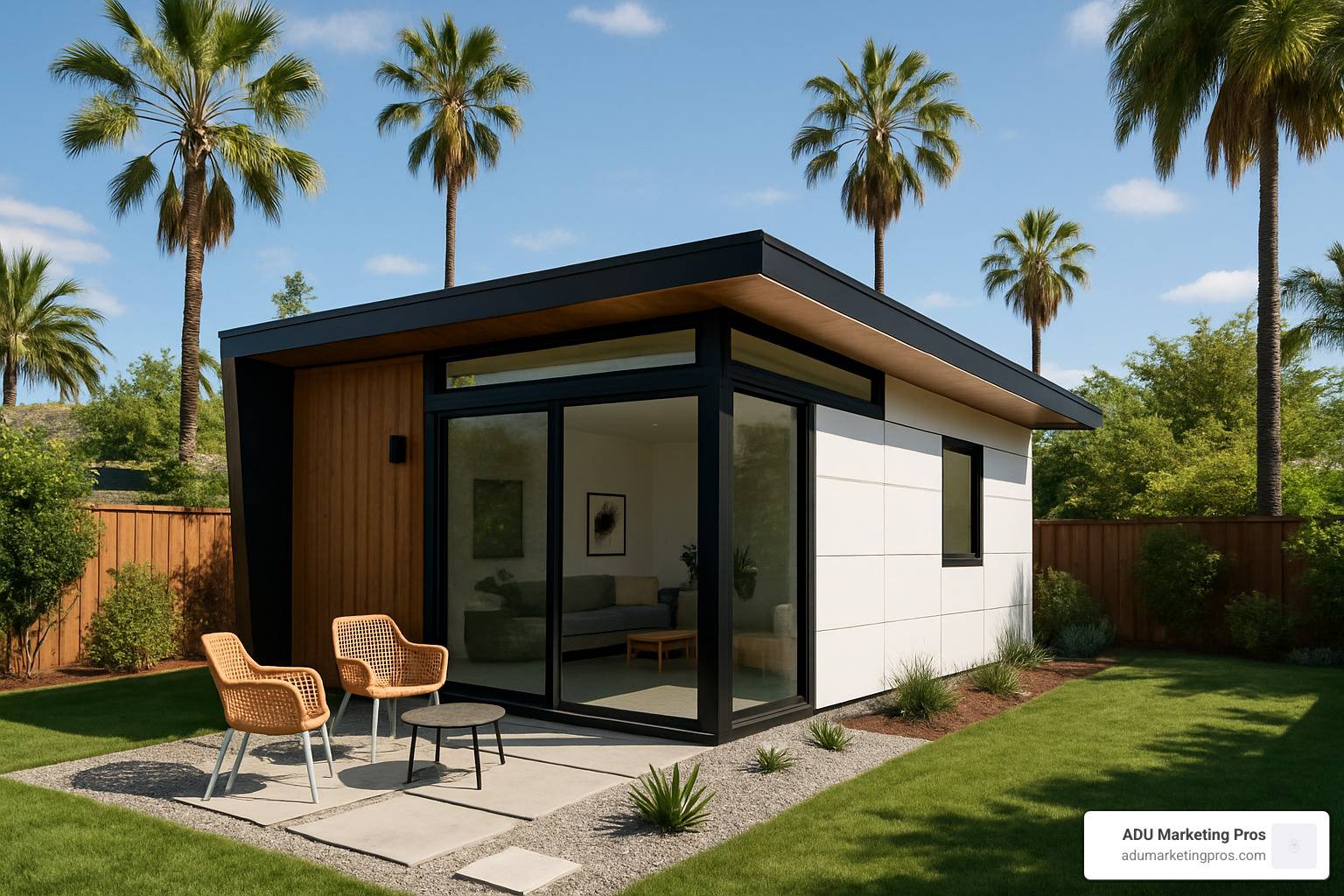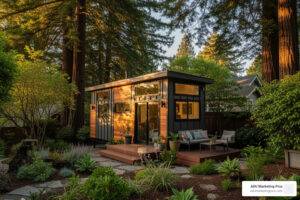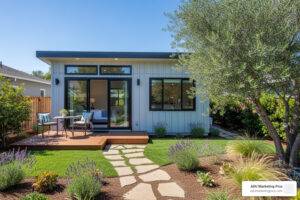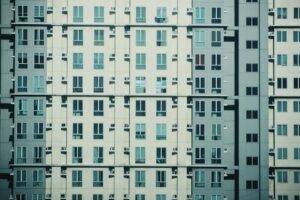The Rise of Prefab ADUs in Los Angeles: Faster, Greener Housing Solutions
If you’re looking for prefab ADU Los Angeles options, here’s what you need to know:
- Cost Range: $160,000 for a basic 400 sq ft studio to $450,000 for premium 1,200 sq ft units
- Timeline: Typically 6-9 months total (vs. 1+ years for traditional construction)
- Permitting: Streamlined 60-day review process in Los Angeles
- Benefits: Faster construction, fixed pricing, reduced on-site disruption, and quality control
Los Angeles homeowners are increasingly turning to prefab ADU Los Angeles solutions as a smart response to the city’s housing challenges. These factory-built accessory dwelling units offer a compelling alternative to traditional construction, with significantly shorter build times and more predictable costs.
“Building an ADU with prefabricated construction is faster, less expensive and less disruptive than an old-fashioned site-built ADU,” notes one industry expert. This efficiency comes from moving most of the construction process to a controlled factory environment, where weather delays are eliminated and quality control is maximized.
The appeal is clear: prefab ADUs can be installed in as little as 6 months compared to traditional builds that often take over a year. For Los Angeles property owners looking to add rental income, house family members, or create flexible living space, these units provide a streamlined path to expanding their property’s potential.
California’s 2020 ADU laws have made these units more accessible than ever, with reduced setbacks (now just 4 feet), waived parking requirements, and size allowances up to 1,200 square feet regardless of the primary dwelling size. This regulatory support, combined with the efficiency of prefab construction, has created perfect conditions for ADU growth across Los Angeles.

Prefab adu los angeles further reading:
– Backyard ADU ideas
– adu plans with garage
– 1200 sq ft adu
Los Angeles Prefab ADU Landscape: Laws, Demand & Benefits
Los Angeles sits at the heart of California’s housing crisis, with the prefab ADU Los Angeles market emerging as a breath of fresh air for homeowners and renters alike. In a city of nearly 4 million people, these accessory dwelling units offer a smart way to increase housing density while preserving the character of beloved neighborhoods.
The 2020 California ADU laws have transformed what’s possible for Los Angeles property owners. These game-changing regulations now allow ADUs up to 1,200 square feet regardless of your main home’s size, with setbacks reduced to just 4 feet from property lines. If you’re near public transit, you can wave goodbye to those extra parking requirements that once made ADU dreams impossible for many homeowners. Perhaps most impressively, the city must process permit applications within 60 days, and many fees have been reduced or eliminated entirely.
“It’s a good time to add extra space as laws are currently in your favor,” as one prefab specialist puts it – and they’re absolutely right. The regulatory landscape has never been more welcoming for Los Angeles homeowners considering a backyard unit.
The benefits of adding a prefab ADU Los Angeles extend far beyond just taking advantage of favorable regulations. Rental income potential stands out as a compelling reason, with many homeowners reporting monthly returns that significantly offset their mortgage payments in a city where housing costs continue to climb.
Multigenerational living has become increasingly popular as families seek creative solutions to Los Angeles’ affordability challenges. A prefab ADU provides the perfect balance – allowing aging parents or adult children to maintain independence while staying close to family support systems.
Your property value can see a substantial boost too. Real estate professionals consistently report that thoughtfully designed ADUs often increase property values by more than their construction costs – making them not just a lifestyle choice but a smart investment.
Sustainability represents another significant advantage. Factory-built ADUs typically incorporate energy-efficient designs and sustainable building practices, producing far less construction waste than traditional building methods. In an environmentally conscious city like Los Angeles, this matters.
Perhaps most valuable is the flexibility these units provide. Your prefab ADU Los Angeles can serve as a home office during the workweek, guest quarters for weekend visitors, or a long-term rental generating steady income – adapting seamlessly as your family’s needs evolve over time.

Los Angeles’ diverse communities have acceptd prefab ADUs as practical solutions for extended family housing, creating dedicated work-from-home spaces, and generating additional income in a city where housing remains at a premium. As more homeowners find how these units can transform their properties into more functional, profitable spaces, demand continues to grow across neighborhoods from Silver Lake to Venice Beach.
More info about Los Angeles ADU regulations
Best Prefab ADU Los Angeles Options for Every Property
The prefab ADU Los Angeles market has blossomed into a diverse ecosystem of options that can suit just about any backyard, budget, or dream. Whether you’re looking for a cozy studio or a spacious family dwelling, today’s prefabricated ADUs offer remarkable quality with far less hassle than traditional construction.
When exploring the prefab landscape, you’ll encounter several distinct construction approaches, each with its own sweet spot:
Modular units arrive as complete sections that get assembled on your property—think of them as puzzle pieces of your new home. Panelized kits ship as wall, floor, and roof components that come together on-site, while flat-pack designs unfold and assemble like sophisticated furniture. Some homeowners are even drawn to container conversions that transform shipping containers into stylish living spaces. For the ultimate in convenience, fully-assembled units arrive complete and are craned into place in a single day.
Here’s how these options stack up against each other:
| Type | Size Range | Cost Range | Installation Time | Best For |
|---|---|---|---|---|
| Modular | 400-1,200 sq ft | $160K-$450K | 2-4 weeks on-site | Maximum quality control, minimal disruption |
| Panelized | 320-1,200 sq ft | $99K-$300K | 3-6 weeks on-site | Flexibility in design, lower shipping costs |
| Flat-Pack | 320-800 sq ft | $67K-$150K+ | 1-3 weeks on-site | Difficult access sites, DIY-friendly |
| Container | 160-960 sq ft | $78K-$250K | 1-2 weeks on-site | Industrial aesthetic, durability |
| Pre-Approved Plans | 460-1,200 sq ft | Varies | Faster permitting | Streamlined approval process |
That these prices typically don’t include site preparation, foundation work, utility connections, or permitting fees—which can add another $50K-$150K depending on your property’s conditions and location.
Studio & One-Bedroom Prefab ADU Los Angeles Models
Small but mighty, studio and one-bedroom prefab ADU Los Angeles models deliver big living in compact footprints. These efficient units (typically 400-640 square feet) use clever design to make every inch count.
Many manufacturers offer pre-approved studio and one-bedroom models (460 and 640 sq ft respectively), featuring sleek modern designs with abundant natural light. Steel-frame construction allows for creative window placement to capture views and sunshine.
Some companies offer compact 400 sq ft Scandinavian-inspired designs with remarkable six-month timelines from order to move-in. Other providers feature 800 sq ft models with 2 beds and 2 baths, with designer finishes that feel anything but “prefab.”
For the eco-conscious, several manufacturers deliver units starting at just 320 sq ft with sustainable materials and superior insulation that keeps utility bills low year-round.
What makes these compact units special is their thoughtful design—high ceilings, generous windows, and seamless indoor-outdoor connections create spaces that live larger than their square footage suggests. They’re perfect for housing a parent, hosting guests, or generating rental income without dominating your backyard.
Family-Sized Two- & Three-Bedroom Units
When you need more substantial space, two and three-bedroom prefab ADU Los Angeles options deliver complete homes with all the amenities families need. These larger units (typically 800-1,200 square feet) offer full-featured living environments that can serve as primary rental properties or multigenerational suites.
Many manufacturers offer generous 3-bed, 2-bath layouts maximizing the 1,200 sq ft allowable ADU size in Los Angeles. Some providers focus on custom-designed units that blend sustainability with architectural distinction, while others incorporate smart home technology and health-focused building materials.
Several Los Angeles-based companies provide customizable two and three-bedroom options with modern aesthetics that complement Los Angeles’ diverse architectural landscape.
While these larger prefabs represent significant investments, their returns can be substantial. Many Los Angeles homeowners report monthly rental income between $3,000-$4,500 depending on neighborhood and amenities—a compelling return that can transform property economics.
“We installed a two-bedroom prefab ADU last year, and the rental income now covers half our mortgage,” shares one Los Angeles homeowner. “Plus, we know we’ve added significant value to our property for when we eventually sell.”
Flat-Pack & DIY-Friendly Kits
For the hands-on homeowner or those with tricky access to their backyard, flat-pack and DIY-friendly prefab ADU Los Angeles kits offer an accessible path to ADU ownership. These ingenious systems arrive as components that can be carried through standard gates without cranes or heavy equipment.
Several manufacturers have pioneered flat-packed units that assemble on-site with minimal equipment. Some basic models start at just $67,000 (excluding site work and permits), making them one of the most affordable entry points into ADU ownership. Other companies offer panelized kits that ambitious homeowners with a few helpers can assemble in as little as 1-2 days, while some specialists focus on access-friendly kits for properties where crane access is impossible.
The beauty of these systems lies in their accessibility—both physically and financially. Without the need for expensive cranes and with the potential for sweat equity, these kits can make ADU ownership possible for more Los Angeles homeowners.

Pre-Approved Plan Sets & Rapid Install
Perhaps the most game-changing development in the prefab ADU Los Angeles market is the emergence of pre-approved plan sets that dramatically accelerate the permitting process.
Los Angeles launched its innovative ADU Standard Plan Program in 2020, creating a pathway for much faster approvals. Several manufacturers now offer models pre-approved by the Los Angeles Department of Building and Safety, with sizes ranging from 460 sq ft to 640 sq ft. Multiple companies offer designs that work within this streamlined framework.
The time savings here are substantial. While standard ADU permits must legally be processed within 60 days, pre-approved plans can sometimes receive permits in as little as one day. This acceleration can shave months off your project timeline and get you to the finish line with far less bureaucratic hassle.
“The difference between standard permitting and using a pre-approved plan is like the difference between standing in line at the DMV versus ordering online,” explains one ADU specialist. “Both get you there, but one path is dramatically faster and less stressful.”
Costs, Financing & Grants for Prefab ADUs
When planning your prefab ADU Los Angeles project, understanding the full financial picture goes well beyond those appealing base prices you see advertised. While manufacturers might showcase starting prices from $160,000 for a cozy 400-square-foot studio up to $450,000 for a spacious 1,200-square-foot unit, there’s more to the story.
Think of your ADU budget like an iceberg – the visible part is just the beginning. The hidden costs include site preparation (ranging from $15,000-$50,000 depending on your yard’s condition), foundation work ($15,000-$30,000), connecting those essential utilities ($10,000-$25,000), permitting fees ($5,000-$15,000), delivery and installation ($5,000-$20,000), and finishing touches like landscaping and walkways ($10,000-$30,000).
A good rule of thumb? Budget around $400-$600 per square foot as your all-in cost. This realistic figure helps prevent those middle-of-project financial surprises that nobody wants.

Financing Options
The good news? You’ve got options when it comes to paying for your prefab ADU Los Angeles project:
Home equity loans or lines of credit often provide the simplest path forward, tapping into your home’s value with typically lower interest rates than other borrowing options. If rates are favorable, a cash-out refinance might make sense, allowing you to wrap your ADU costs into your primary mortgage.
For those who prefer a specialized approach, construction loans are designed specifically for building projects and convert to permanent mortgages once your ADU is complete. Some prefab manufacturers even partner with lenders to offer ADU-specific financing packages that streamline the process.
Don’t overlook renovation loans like FHA 203(k) and Fannie Mae HomeStyle options, which allow you to finance both the purchase and renovation of a property – perfect if you’re buying a new home with ADU plans already in mind.
Grants and Incentives
California wants to help you build that ADU! The CalHFA ADU Grant Program offers up to $40,000 in pre-development grants for homeowners. This money covers those early expenses like site preparation, architectural designs, and permitting fees that come before construction even begins.
Depending on your neighborhood, you might qualify for additional local incentives, particularly if your ADU will provide affordable housing. And don’t forget about utility rebates – energy-efficient ADUs with solar installation, green appliances, and sustainable features often qualify for money back from local utility companies.
The financial picture gets even brighter when you consider the return on investment. Many Los Angeles homeowners find their ADU rental income covers their financing costs while still generating positive cash flow. Plus, a well-designed ADU typically adds significant value to your property – often exceeding what you spent to build it.
As one real estate professional puts it: “For many Los Angeles homeowners, an ADU represents not just additional space but a smart financial investment. The combination of property value increase and potential rental income creates a compelling financial case.”
CalHFA ADU Grant Program
ADU Construction Cost
Permitting, Zoning & Timeline in Los Angeles County
Navigating the permitting maze for your prefab ADU Los Angeles project might seem daunting at first, but I promise it’s more straightforward than it used to be! Thanks to California’s pro-ADU legislation, the path has been cleared for homeowners across Los Angeles County.
Zoning Regulations
Good news! As of 2023, you can build an ADU in virtually any residential zone in Los Angeles County. It doesn’t matter if you have a tiny lot or a sprawling estate—the door is open for ADU development.
Your prefab ADU Los Angeles project will need to work within these key parameters:
When it comes to size, you’ve got generous allowances—up to 1,200 square feet for detached ADUs regardless of your main home’s size. If you’re attaching your ADU to your existing home, you can build up to 50% of your current living area.
The setback requirements have become incredibly reasonable, with just 4 feet needed from side and rear property lines. This change has been a game-changer for many Los Angeles homeowners with smaller lots who previously couldn’t fit an ADU.
While Floor Area Ratio (FAR) limitations won’t prevent your ADU project, you’ll still need to mind the overall lot coverage requirements. Height restrictions typically cap at 16 feet, though some areas permit two-story ADUs up to 25 feet tall.
And here’s a breath of fresh air—parking requirements have been largely waived, especially if your property sits within a half-mile of public transit. No more sacrificing precious yard space for extra parking spots!
Permitting Process and Timeline
The path to getting your prefab ADU Los Angeles project approved typically follows a predictable journey:
Your trip begins with pre-application research, where you’ll verify your property’s eligibility and local requirements—a process that usually takes 1-2 weeks. Next comes plan development, working with your prefab provider to customize their designs for your specific site, which typically spans 2-4 weeks.
When your plans are ready, you’ll submit them to the Los Angeles Department of Building and Safety (LADBS), including detailed plot plans, energy calculations, and foundation specifications. This submission itself takes just a day, but then comes the waiting game.
By law, authorities must respond to your ADU permit application within 60 days—a vast improvement over previous timelines. In practice, this review typically takes 2-8 weeks. Once approved, permits are issued immediately, and construction can begin.
Throughout construction, you’ll schedule required inspections, culminating in a final approval and certificate of occupancy, which typically takes 1-2 weeks to obtain after your final inspection.
“The best part about choosing a prefab ADU Los Angeles option with pre-approved plans is that you can slash that 60-day review period dramatically,” explains one local ADU consultant. “Some homeowners have received permits in as little as one day with pre-approved designs.”
Special Considerations
Several factors might influence your permitting journey:
Fire safety requirements generally align with your main home—if your house doesn’t need sprinklers, neither does your ADU. However, if your property sits in a Very High Fire Hazard Severity Zone, additional precautions may be necessary.
Existing utility easements can restrict where you place your ADU, so checking your property survey early is essential. If you live in a neighborhood with an HOA, they can’t prohibit your ADU outright, but they can still enforce reasonable design standards to maintain neighborhood aesthetics.
Los Angeles requires ADUs to connect to the main sewer system in front of the property, which can impact your site planning and budget. And if your home sits in a historic district, expect additional design review requirements to ensure your ADU complements the neighborhood’s character.
All told, the timeline for your prefab ADU Los Angeles project typically ranges from 6-9 months from initial concept to move-in day. This includes 1-2 months for planning and design, 2-3 months for permitting, a month for site preparation, 2-3 months for factory construction, and 1-2 months for on-site installation and finishing touches.
Compare this to traditional construction methods that often stretch beyond 12-18 months, and you can see why prefab options have become so attractive to Los Angeles homeowners looking to add living space efficiently.
Design, Utilities & Future-Proof Features
The prefab ADU Los Angeles market has evolved into something truly special – these aren’t just basic backyard units anymore. Today’s prefabs blend thoughtful design, smart technology, and forward-thinking features that ensure your investment remains valuable and functional for decades.
When you step inside a modern prefab ADU, you’ll immediately notice the sense of spaciousness created by ceiling heights of 9-11 feet – a simple design choice that makes even compact units feel generous and airy. Large sliding doors and strategically placed windows create a seamless flow between indoor and outdoor spaces, effectively making your ADU feel larger than its actual footprint.
“Flexibility is the key to longevity,” explains one architect who specializes in ADU design. “The best prefab ADUs can easily transform as owners’ needs evolve.” This adaptability comes from open floor plans and multifunctional spaces that can transition from home office to guest suite to rental unit as your needs change over the years.
Storage solutions in today’s prefab ADU Los Angeles options are nothing short of ingenious – under-stair compartments, murphy beds, and built-in cabinetry that maximize every square inch. And because these units are built in controlled factory environments, the precision and quality of materials often exceeds what you’d find in traditional construction.

When it comes to utilities, proper planning is essential for any prefab ADU Los Angeles project. Most units require a dedicated electrical panel (typically 100-200 amps) that connects to the main service or can be separately metered. Water supply usually ties into the main house system, though larger ADUs might benefit from separate metering. In Los Angeles, ADUs must connect to the municipal sewer system, generally tying into the main house’s sewer line.
Gas connections, if needed, must include proper shutoff valves to meet safety codes. And don’t forget about communications – prewiring for high-speed internet and smart home technology ensures your ADU remains connected and convenient.
The most forward-thinking prefab ADU Los Angeles designs incorporate features that improve long-term value while reducing environmental impact. Solar-ready roofs allow for immediate or future panel installation, while high-performance insulation systems (often exceeding code requirements) keep energy bills low and comfort high. Smart home technology for climate control, security, and energy management allows for efficient operation and remote monitoring – perfect for rental units or monitoring aging parents.
“One advanced panel system used in some prefab ADUs achieves net-zero emissions with 30% recycled content and no mold or termite risk,” notes one manufacturer. These advanced building systems represent significant improvements over traditional construction methods.
Universal design elements like zero-step entries, wider doorways, and accessible bathrooms ensure your ADU remains usable as occupants age – an important consideration for multigenerational living arrangements. Water conservation features address California’s ongoing drought challenges through efficient fixtures and thoughtful landscaping.

Many Los Angeles prefab manufacturers now offer CALGreen certification or compliance with Passive House standards, ensuring these structures exceed minimum energy efficiency requirements – not just meeting today’s standards but anticipating tomorrow’s as well.
By embracing these thoughtful design elements and forward-thinking features, your prefab ADU Los Angeles unit won’t just meet your immediate needs – it will remain adaptable, efficient, and valuable for generations to come. It’s not just about building additional space; it’s about creating sustainable, flexible living solutions that grow and change alongside your family.
Frequently Asked Questions about Prefab ADU Los Angeles Projects
How much does a prefab ADU cost in Los Angeles?
When homeowners ask me about the cost of a prefab ADU Los Angeles project, I always emphasize that the answer isn’t one-size-fits-all. Your final price tag depends on your specific needs and property conditions.
For the unit itself, you’re typically looking at base pricing ranges that correlate with size:
- Studios and one-bedrooms (400-640 sq ft) generally start around $160,000 and can reach $250,000
- Two-bedroom units (641-900 sq ft) typically fall between $250,000-$350,000
- Larger three-bedroom options (901-1,200 sq ft) usually range from $350,000-$450,000
Here’s the catch, though – these figures rarely tell the whole story. Your all-in costs will include site preparation, foundation work, utility connections, and permitting fees, which can add another $50,000-$150,000 to your project.
The steepness of your lot, how easily crews can access your backyard, and the distance to connect utilities all play significant roles in your final budget. Premium finishes and customizations will naturally push costs higher too.
For a realistic budget, I recommend planning for $400-$600 per square foot as your all-in cost. This gives you a cushion for those inevitable surprises that come with any construction project.
How long does it take to permit and build a prefab ADU in LA?
One of the biggest advantages of choosing a prefab ADU Los Angeles option is the timeline. Most homeowners can expect to go from initial planning to move-in ready in about 6-9 months – roughly half the time of traditional construction methods.
This efficiency comes from a clever parallel process. While your permits are being processed, the factory can be scheduling your build. While your unit is being constructed in the factory, crews can prepare your site. This overlapping timeline typically breaks down as:
- Planning and design: 1-2 months to nail down your plans
- Permitting: 2-3 months (though California law requires decisions within 60 days)
- Site preparation: 2-4 weeks for foundation and utility work
- Factory construction: 2-4 months to build your unit
- On-site installation: Less than 3 weeks for delivery and finishing touches
I’ve seen this timeline shrink even further for homeowners who use pre-approved plans through LA’s Standard Plan Program, which can sometimes reduce permitting to days rather than months.
The reduced on-site construction time is a game-changer for many families. Instead of enduring a year of contractors, noise, and disruption, the actual installation happens remarkably quickly.
What financing and grants are available?
Funding your prefab ADU Los Angeles project is becoming increasingly accessible thanks to evolving financial options and incentives.
Home equity loans or lines of credit (HELOCs) remain the most popular choice for many homeowners because they typically offer the lowest interest rates. Construction loans specifically designed for ADU projects are another solid option – these cover the building period and then convert to a permanent mortgage.
For homeowners with good equity in their property, cash-out refinancing lets you replace your existing mortgage with a larger one, using the difference to fund your ADU.
The CalHFA ADU Grant Program is a fantastic resource that many people overlook. This program provides up to $40,000 in pre-development grants covering costs like architectural designs, site preparation, and permitting fees – essentially helping you get your project off the ground.
“The grant program was a game-changer for us,” one Los Angeles homeowner told me. “That $40,000 covered all our pre-construction costs and made the whole project financially viable.”
Some neighborhoods in Los Angeles offer additional incentives, particularly for units that will provide affordable housing. And don’t forget to check if your chosen prefab manufacturer partners with specific lenders for specialized financing packages.
The really exciting part? Many homeowners find that the potential rental income from their ADU can offset or even completely cover their monthly financing costs. This can transform what seems like a major expense into a self-funding investment.
What are the main advantages of prefab over site-built ADUs?
After talking with dozens of homeowners who’ve completed prefab ADU Los Angeles projects, I’ve found they consistently highlight several key advantages over traditional construction.
Quality control tops the list. Factory construction means your unit is built by specialized teams in a controlled environment, protected from weather during construction. This typically results in more precise craftsmanship and fewer defects than site-built alternatives.
Speed and predictability are huge benefits too. With most construction happening off-site, your property experiences just weeks rather than months of disruption. The fixed pricing models also reduce those budget-busting surprises that plague traditional construction projects.
Design efficiency is another advantage that’s easy to overlook. Prefab manufacturers have refined their designs through multiple iterations, eliminating the experimental aspects of custom design. They’ve already worked out the kinks in layouts, material choices, and construction techniques.
The sustainability benefits are impressive as well. Factory construction typically generates significantly less waste, and many manufacturers incorporate advanced insulation, energy-efficient systems, and sustainable materials as standard features.
Perhaps most appreciated by neighbors is the reduced disruption. As one manufacturer aptly put it: “Your neighbors will thank you for choosing offsite prefab over noisy site builds.”
Can I customize a prefab ADU to match my main house?
Yes! The days of one-style-fits-all prefab units are long gone. Most prefab ADU Los Angeles manufacturers now offer various levels of customization to help your ADU complement your existing home.
You’ll typically have choices of different exterior finishes, colors, and roof styles. Many manufacturers allow you to modify window and door placements to optimize views or privacy. Inside, you can often adjust floor plans within certain parameters and select from multiple fixture and finish packages.
The level of customization does vary between manufacturers. Some offer nearly unlimited options, while others maintain stricter standardization to control costs and quality. Generally, more customization leads to higher costs and longer timelines, so it’s about finding the right balance for your needs and budget.
I was particularly struck by one Los Angeles homeowner’s approach: “We decided that the accessory dwelling unit would be modern…in keeping with the existing house.” This highlights an important consideration – while exact matching isn’t always necessary, architectural compatibility often creates the most harmonious result.
When exploring customization options, I recommend focusing on the elements most visible from your main house or street. Sometimes, strategic customization of just a few key elements can create a cohesive look without the expense of customizing everything.
Conclusion
The prefab ADU Los Angeles market has truly transformed how homeowners think about expanding their living space. These innovative structures aren’t just buildings—they’re solutions to real challenges facing Los Angeles families, from housing loved ones to creating income opportunities in one of America’s most expensive housing markets.
What makes prefab ADUs so compelling is how they’ve reimagined the construction process. Rather than enduring years of disruptive building work, homeowners can now have a beautiful, functional space installed in just months. The quality control that comes with factory construction means these aren’t compromised spaces—they’re often built to higher standards than traditional construction, with every joint, connection, and finish inspected before the unit ever reaches your property.
For budget-conscious homeowners (and who isn’t these days?), the predictable pricing models of prefab ADU Los Angeles options provide welcome relief from the infamous cost overruns of traditional construction. Knowing exactly what you’ll pay—and when—makes these projects accessible to more families.
The timing couldn’t be better for considering a prefab ADU. California’s 2020 ADU laws have cleared away many of the regulatory problems that once made these projects challenging. Los Angeles has acceptd this housing solution with its Standard Plan Program, making the permitting process smoother than ever. With financing options expanding and programs like the CalHFA ADU Grant offering up to $40,000 in assistance, these units have moved from luxury additions to practical investments.
From our work at ADU Marketing Pros, we’ve seen how these spaces transform properties and change lives. The architects and builders we support across Los Angeles, San Diego, and the Bay Area consistently report high satisfaction from homeowners who find just how versatile these spaces can be—from housing parents who want to age in place to creating income streams that help pay down mortgages.
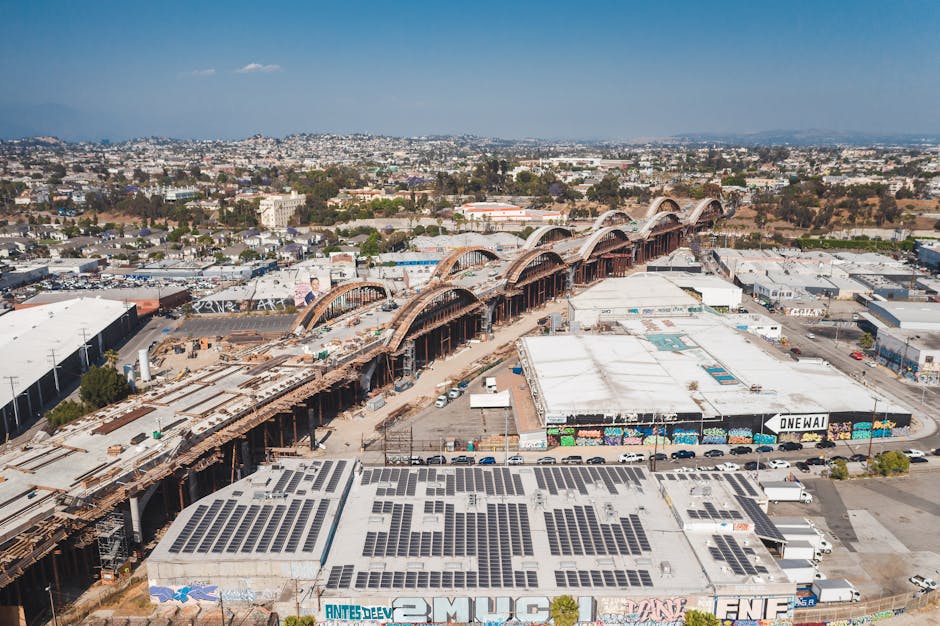
Looking ahead, prefab ADU Los Angeles projects will increasingly become part of the city’s housing fabric. As more homeowners recognize how these structures can simultaneously address multiple needs—housing family, generating income, creating home offices, and building equity—their popularity will only grow.
If you’re considering adding a prefab ADU to your property, start with a thorough site assessment to understand your specific opportunities and constraints. Take time to explore multiple manufacturers—each brings different strengths to the table in terms of design, materials, and construction approach. Develop a comprehensive budget that looks beyond just the unit itself to include site preparation, utilities, and finishing touches.
With thoughtful planning and the right team behind you, your prefab ADU can become more than just an addition to your property—it can be a flexible space that evolves with your family’s needs for decades to come, all while potentially providing significant financial returns.

